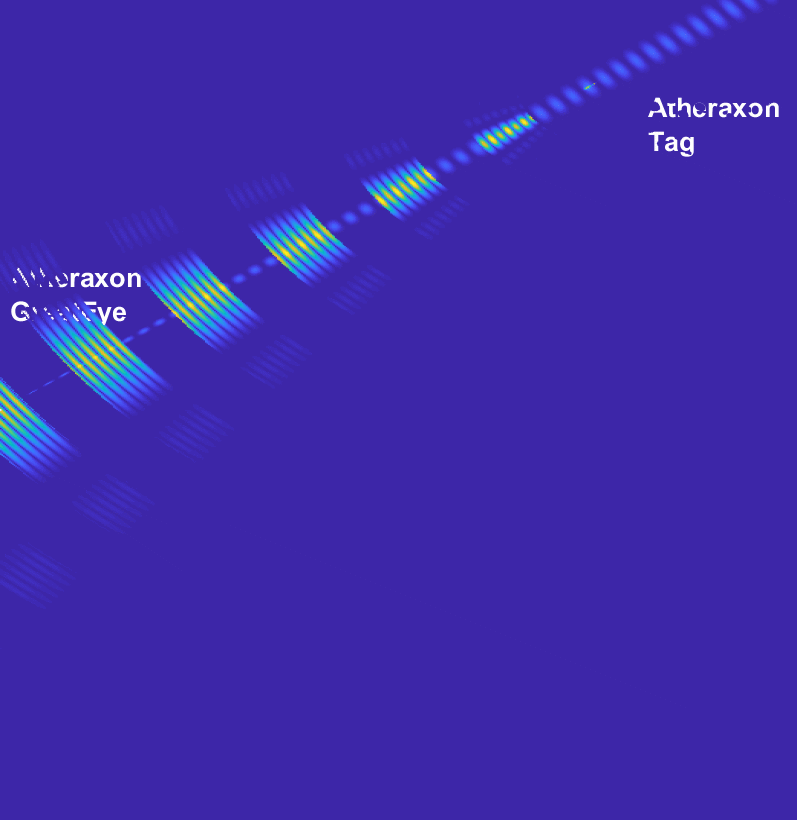Tags Overview
Tags receive the signals sent by the radar while dynamically changing their reflectivity (i.e. backscatter), thereby creating a signature that is easily detected by the radar. This signature is unique to each individual tag, allowing the radar to identify the tag while simultaneously locating it.

Their standout features include:
- Inherently Real-Time: The only delay between the signal being sent by the radar and its reflection being received is the time it takes for light to travel back and forth between the radar and the tag (on the order of nanoseconds).
- Low Power: Given that the tag can piggy back its communications onto the signal received from the radar, it does not need to generate a wireless signal. Therefore, a tag can consume 1000x less power than a typical active (BLE, UWB, etc.) tag.
Tags create unique signatures that the Radar can not only track with high precision in 3D but also can unambiguously identify. Tags put any points or assets they are associated with on the Radar, quite literally.